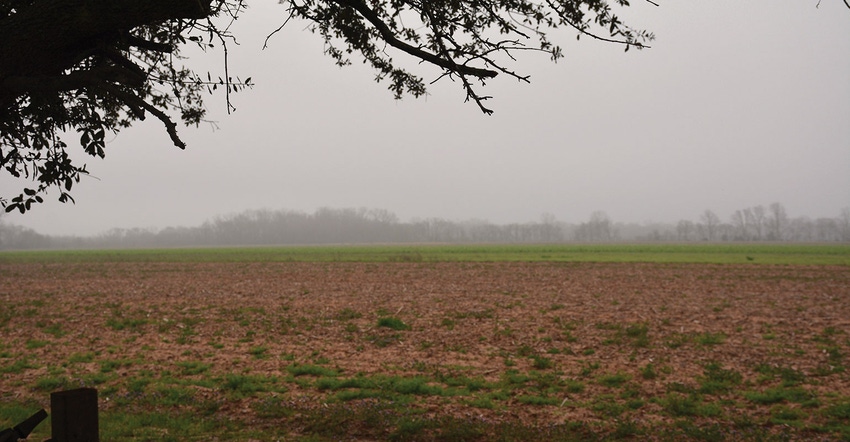
Consider that the 500-acre piece of prime farmland you've hoped would come on the market for the past 15 years finally does.
Is now the right time to buy?
Maybe, maybe not, says Brian Philpot, CEO AgAmerica, a mortgage company specializing in farm real estate.
Philpot advises would-be buyers to tread lightly, considering the current farm economy.
"Debt is an expense," he said from the AgAmerica Lakeland, Fla., headquarters.
He says before taking on new debt, farmers and ranchers should look at their current debt-to-asset ratio and be "very deliberate" before changing that status. "Before taking on more debt, make certain the operation can cover it. If your debt-to-asset ratio is 40 percent and buying property can you keep it at 40 percent, with good income, it's probably a good purchase.
"Be very smart with covering debt. That's one thing that can get a good farmer in trouble. And it's one thing a farmer can control," Philpot says.
Temptation
He adds that when prime real estate, maybe good land adjacent to current holdings, comes available, the temptation might be hard to resist.
"One mistake we see is that sometimes buyers' eyes are bigger than their stomachs," he says. "Too often, buyers have not thought through what more debt does to the balance sheet. A higher debt load means a reduced ability to cover debt. It reduces working capital. Debt costs money. We take prospective borrowers through that."
He adds that working through the numbers might show that the farmer needs only part of the available acreage. "Determine how it will affect the overall operation. Buying and then selling part of it might be a better option. We believe farmers don't need to be highly leveraged with a lot debt."
Philpot says AgAmerica loan officers work with prospective borrowers to find solutions to refinance, restructure or take out new loans. Adding acreage or refinancing to restructure family operations for a generational transfer may require a loan.
"The key to us, is what the budget shows and what the balance sheet looks like. We consider government programs farmers use, insurance policies in effect and the operating history. Then, we can offer a product based on that risk."
Budgets are critical, he says. "With any borrower, we look at production history and budgets. With available data, we can evaluate what's out there [on the farm] and line up what a farmer might be putting out in crop expenses and what income projections will be and align the numbers."
Help develop budgets
He says in a lot of cases farmers' budgets are not thorough. "Our team helps develop budgets. That's also our role, partly, as counsellors.
AgAmerica does not do crop loans but lends on collateral on real estate. "In some cases, a farmer might have enough equity that we can provide working capital with a line of credit at a better rate. Our security is the farm. Any loan we make is secured by real estate."
Even in a sluggish ag economy, Philpot says farmland is changing hands.
"It's interesting. Some have compared the current situation to conditions back in the 1980s. Things are not that bad. Farms are hanging on and are in better shape than what's been reported, but things are still tough."
He has seen "some softening of markets when landowners sell. Real estate prices have dropped in some areas. But we also see institutional money in the market.
"When land becomes available, someone will pay for it. When farmers sell out, buyers are out there. We see a robust number of transactions."
Good demand
Philpot says farm real estate activity is not regional. It's happening all over. "Anywhere there is good dirt, we see a pretty good demand for farmland."
The caveat, Philpot says, is to be cautious, know how much debt the farm can cover and don't borrow into a position of high leverage.
"In good times, everyone can make money farming. Some think it's going to continue, and they borrow more. But you can't assume that what you have now is going to happen every year."
About the Author(s)
You May Also Like






